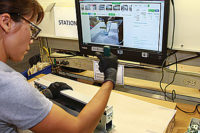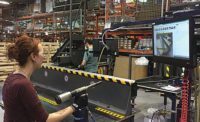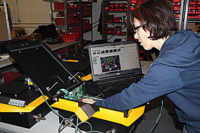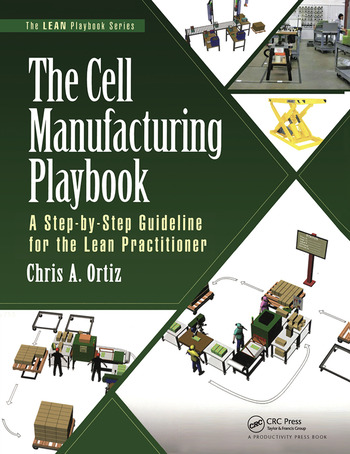There are numerous benefits to implementing electronic work instructions, including cost savings, productivity enhancement, error proofing, real-time change control, operator feedback and traceabilty.
The most immediate benefit is time savings—particularly when it comes to creating and managing work instructions. Quality is enhanced, too, because workers aren’t required to process as much information on the line. They can see the end goal instantly, so there are fewer errors and missed steps.
Productivity increases, because the optimal process is always used, even if the model or option is rarely seen. The correct process is always available. Assemblers don’t need to refresh their memories, and time isn’t wasted implementing the wrong process.
Another benefit of going paperless is that it’s easier to update work instructions. Instead of having to go from station to station replacing sheets of paper, engineers simply upload a new file. And, if engineers find better ways to assemble a product, they can upload the information immediately.
Of course, assemblers must still interact with a flat-panel display. At the very least, they will need look at the display periodically as they work. They may even need to interact with the display via a mouse, keyboard or touch screen.
There are two drawbacks to that. First, assemblers may need both hands to perform a task. And second, there are times when assemblers can’t access a screen—for example, when installing components in the interior of an airplane.
The new FactoryOptix augmented reality headset from Aegis Software Corp. solves that problem. The FactoryOptix headset provides “exactly the same information you would get using one of our paperless workstations, only now it’s fed directly in front of your eye. It’s like the heads-up display in a car,” says Michael Ford, senior director for emerging industry strategy at Aegis Software.
The technology doubles the productivity of assemblers by enabling them to use both hands at all times. They don’t have stop to pick up a bar code reader, use a keyboard or mouse, or look away from their task to read work instructions from a screen.
Instead, assemblers view step by step work instructions, including text and images, in augmented reality. The headset features an integrated smart display that offers the user a hologram-like visual experience. The image is projected onto the lens of the headset and is transparent so that the wearer’s field of vision is not restricted by the display. Assemblers can simultaneously perceive what is happening in their environment.
Robust and lightweight, the headset has a long battery life. “People can wear it all day,” says Ford. “There’s no motion sickness or anything like that. It’s not like those big virtual reality headsets [for video games].”
Assemblers use voice commands to tell the headset to scan a bar code, display the next operation, access additional information, or take a picture of the work to confirm that a process has been completed or question a problem with the assembly. They can also control the headset by swiping along the right side of the frame. Assembly steps or quality checklists appear in the upper right corner of the tiny screen.
FactoryOptix uses the same internal digital product model to provide all the data and documentation needed for AR to work. No additional costs or programming are necessary. “It uses the same data as our FactoryLogix paperless work instruction software,” says Ford.
FactoryOptix is great for high-mix production environments, he adds. “Using FactoryLogix, workers can be given instructions immediately to make another product, perform an inspection or run a test,” he says. “They’re no longer tethered to doing one particular job. They are free to be part of the overall digital factory. They can contribute in many ways, without the need for specialist knowledge.”







